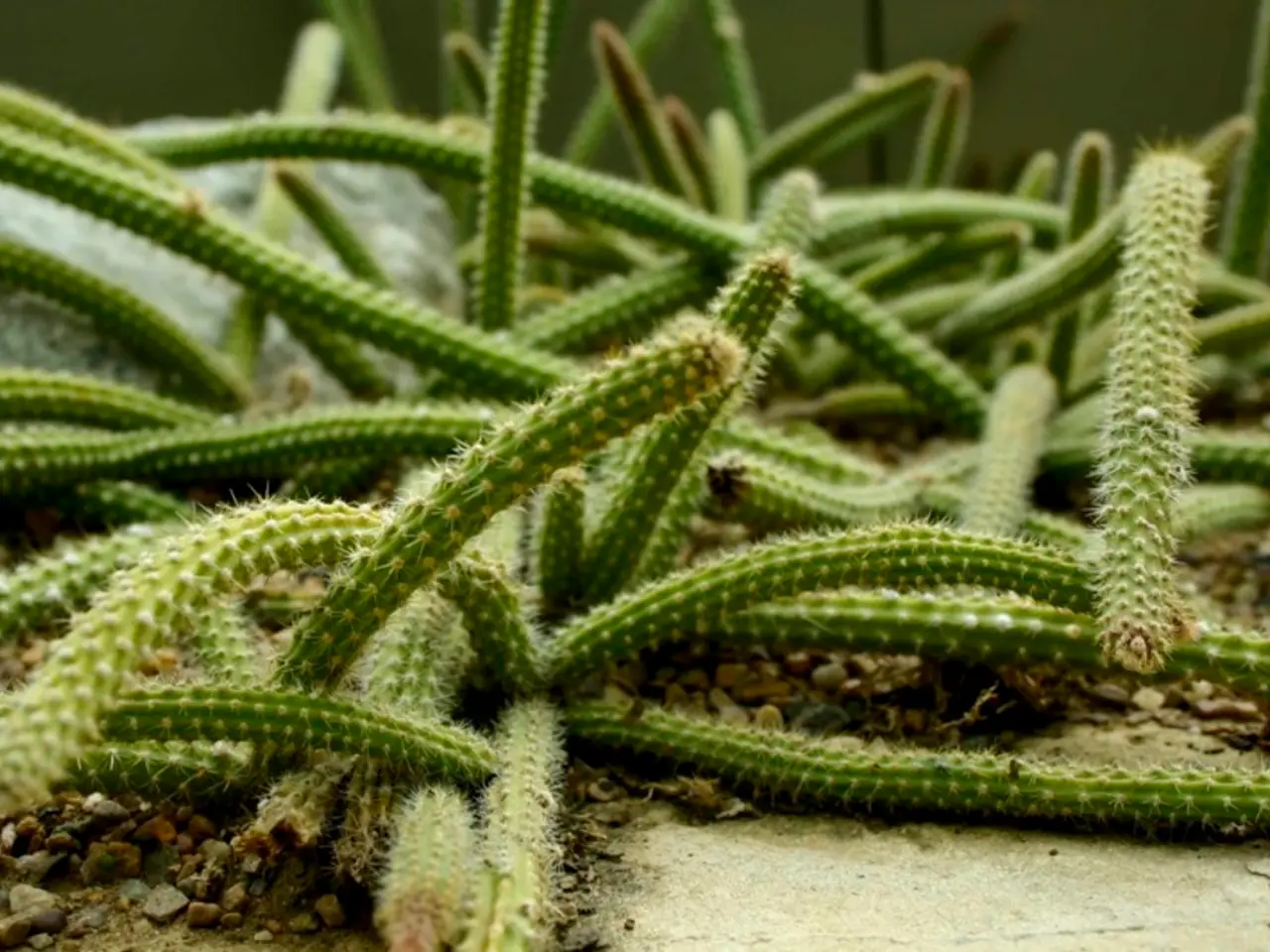Guide to Nurturing Prickly Cacti
==================================================
Cacti and succulents are popular plants known for their unique shapes, vibrant colours, and low maintenance requirements. One of the fascinating aspects of these plants is their ability to reproduce through various methods, each with its own specific steps.
Division
Division is a method that involves uprooting an overgrown clump of cactus or succulents and carefully separating the stems and roots into smaller, independent plants. These divided plants are then replanted in well-draining soil. This method is ideal when only a few plants are wanted and is most suitable for clumping species or those that produce offsets, often referred to as "pups".
Cuttings
For stem or leaf cuttings, a healthy segment (a few centimeters) is cut off the parent plant. The cutting is then left to dry for several days to form a callus, which prevents rotting. Once callused, the cutting is placed in well-draining soil (often a cactus or succulent mix) or sometimes propagated in water until roots develop. After roots emerge (usually within a week or more), the new plant is cared for like mature succulents or cacti, including controlled watering and bright, indirect light.
Seed Propagation
Seed propagation involves sowing seeds of cactus or succulent species in a suitable soil mix, often with sand for drainage. Seeds require warm temperatures and light to germinate, and seed-grown plants take the longest to mature.
Grafting
Grafting combines a scion (desired cactus or succulent top) onto a rootstock (often a hardy or fast-growing species). This technique is common for some cacti to improve growth or achieve unique appearances.
Success in these propagation methods depends on using well-draining cactus/succulent soil, allowing cut surfaces to callus before planting to prevent rot, providing bright indirect light, and careful watering to avoid overwatering.
Starting plants from seeds can be gratifying, but seeds may take a long time to germinate and vary in longevity and viability. Grafting is done with compatible plants, generally meaning plants in the same species, genus, or family.
When dividing plants, one will need newspapers, a bucket of warm water, clean pots, fresh, clean soil, drainage aids, a sterile knife, and plenty of time. Grafting is more successful when the plants are in their active growing period, usually in the spring through the fall. Seeds should be started in a well-drained, sterile mix and water sparingly. Too much water or humidity can cause them to rot during propagation.
In summary, propagating cacti and succulents can be an enjoyable and rewarding experience. By understanding the different methods available and following some basic guidelines, you can successfully grow new plants from your existing ones. Happy propagating!
Here are three sentences related to the given words in the given context:
- Incorporating sports, such as yoga or gardening, into one's lifestyle can contribute to improved health and well-being, similar to the process of caring for cacti and succulents.
- To maintain a healthy home environment and promote wellness, consider placing certain plants like cacti and succulents in the home-and-garden space, as their air-purifying qualities help filter the air and reduce pollutants.
- To create a vibrant and colorful outdoor space, try incorporating a variety of cacti and succulents into your lifestyle through gardening, much like exploring different scientific theories expands one's knowledge in that field.





